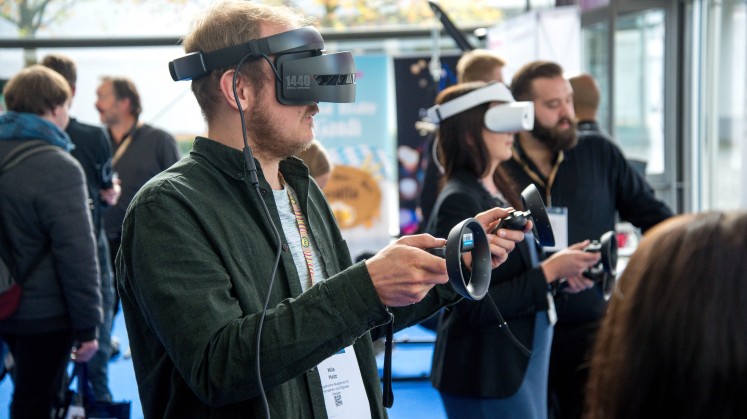Early Virtual Reality (VR) was more of a novelty attraction. It was mostly used for games, and the technology had yet to reach capabilities that could deliver a realistic virtual experience. However, even with these limitations, the cost of the hardware and software put the technology out of reach for most businesses that would be interested in experimenting with VR.
When you look at modern virtual reality, you see an almost unrecognizable industry from where it began. The technology can now deliver the realistic experiences people want, and the cost of hardware and software has come down considerably. This has resulted in a global market that was valued at close to $16 billion in 2020.
Much of this growth is due to the fact that gaming is only a fraction of the modern market. Businesses, governments, and other organizations are starting to invest in technology. As virtual reality continues to grow and expand to different industries, it will have a major impact on business. From looking at the current applications, we can see some of the ways VR is going to change the future of business.
1. Retail
The outlook for virtual reality in retail is very promising. This is not only true for some brick-and-mortar stores, but it could also be used to provide a better experience for online shoppers.
For in-store experiences, businesses could use VR to allow users to try products before they buy them. If it is an expensive product that can’t be tried before purchase, providing a VR alternative can be a good way to give shoppers the ability to test the product.
In online retail, VR could provide shoppers with a more realistic representation of the product they are buying. For example, instead of just looking at pictures and reading descriptions, VR could give consumers a realistic rendering that would provide an experience that is more like seeing the product in person.
2. Meetings
Meeting in person can be a bit of a burden under certain circumstances. As an alternative, some people might choose video conferencing or a simple phone call, but these options do not compare to being in a room with a person. With VR, you can hold meetings in a virtual space that is more like meeting in person.
This technology can be useful for meeting business associates, and it can also be valuable for business teams with members who work remotely. For example, VR allows you to create a virtual meeting room, and people can create realistic avatars. Many of the current VR meeting platforms even have tools that can make meetings more productive.
3. Construction
Construction is another industry that could see a lot of change by using virtual reality. VR teams could test designs in a virtual environment to see how they will perform before they are built. You could even create a VR version of a building to see what it will look like in its real environment.
Beyond design teams, it could even work well for sales. For example, homebuyers could see a VR version of a house before they build it. The platform could even have features that allow the buyer to place furniture in the VR model, decorate, and change things like the paint colors and options for flooring.
4. Travel
The travel industry could also benefit from using VR. One example is for a hotel to create a virtual tour of the different rooms they have. Beyond the rooms, hotels could create tours of different facilities like a gym or a spa. This could be an effective tool for showing travelers what a hotel has to offer without them having to see it in person.
Beyond the hotels, different attractions could create virtual tours. Whether it is a national park, museum, or anything else, virtual reality can be the perfect tool for giving travelers a preview of what different attractions have to offer.
5. Enhanced Training
Virtual reality can be used to create better training programs for employees. For example, instead of having new employees read a training manual or watch some videos, you can build a virtual experience that allows a new recruit or an existing employee to experience different parts of the job more realistically.
This can be especially beneficial for jobs that may be hazardous to the employee or other people in the workplace. With virtual reality, the trainee could get an experience that allows them to come much closer to actual mastery of a dangerous task before applying the skills in the real world. This could be a good way to cut down on incidents in the workplace, and it could reduce the waste of valuable materials.
Many businesses are already starting to invest in VR. With that said, we are still in the early stages of its adoption by businesses. However, as technology advances and becomes more accessible, it is bound to become a more common tool for many applications.
You Might Be Interested In:
An Ultimate Guide to VR Headsets
A Detailed Guide on Different Types of VR Headsets


